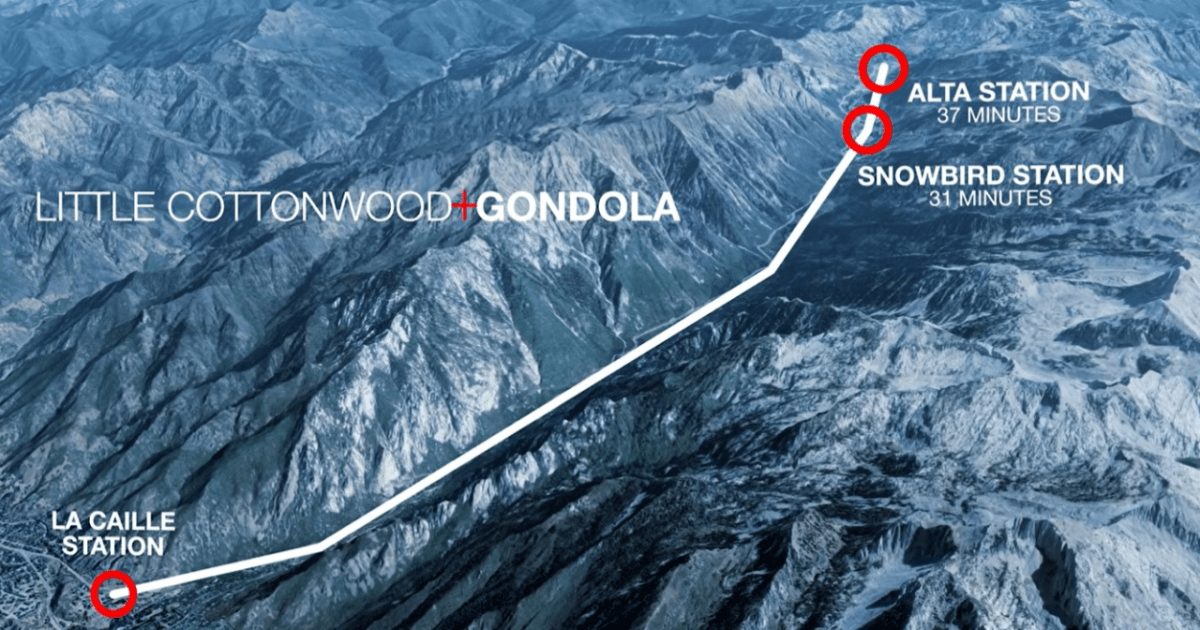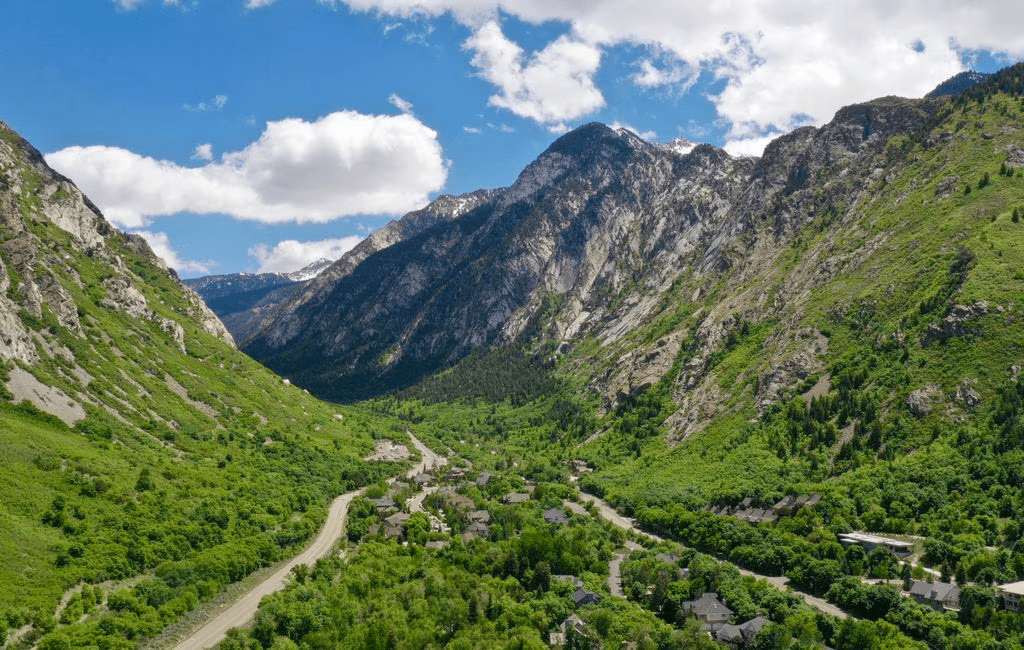
The Utah Department of Transportation (‘UDOT’) is facing more legal opposition to its Little Cottonwood Canyon Gondola Project. Salt Lake City and Save Our Canyons both filed lawsuits on Monday, December 11, 2023, in Federal Court challenging UDOT’s decision-making process and selection of the La Caille Gondola Alternative to address traffic problems in Little Cottonwood Canyon. Both of these lawsuits focus on different concerns than the previous suit filed by Friends of Alta and others.
- Related: Lawsuit Filed Against Little Cottonwood Canyon, UT, Gondola: What Does it Say and What Does it Mean?
Salt Lake City, in conjunction with Sandy City and the Metropolitan Water District of Salt Lake and Sandy, raised major concerns over the potential impacts of a gondola on the water quality of Little Cottonwood Creek. Salt Lake City and Sandy City hold almost all of the water rights to Little Cottonwood Creek, and the creek is a critical source of drinking water for both municipalities. The lawsuit from Salt Lake City also alleges that neither the draft nor final environmental impact statements (‘EIS’) contain any significant discussion of the impacts of climate change on the project.
Save Our Canyons challenged UDOT’s decision based on concerns that a gondola would drastically impact the character of the canyon as a rugged natural area that is sought out by many recreationalists specifically because of its lack of development. The organization’s lawsuit alleges that UDOT did not adequately consider other alternatives in part because of political pressure from the Governor’s office and current and former Utah State Senators. Save Our Canyons further alleges that this political pressure stemmed from lobbying from a development group that owns land adjacent to the proposed base station site at La Caille.
UDOT provided little in the way of analysis or estimates of the price of riding the gondola, bus, or how much occupancy-based tolling would be. The Salt Lake City suit alleges that without these numbers, the effectiveness of the gondola in reducing traffic in Little Cottonwood Canyon cannot be assessed. Indeed, both lawsuits highlight UDOT’s admission that pricing the gondola or the tolls too high could result in a shifting of the traffic to Big Cottonwood Canyon. As the proposal currently stands, the operation of the bus service and construction of snow sheds on the highway in avalanche-prone areas will happen before any construction of the gondola begins. Salt Lake City and Save Our Canyons both objected to UDOT’s alleged failure to consider if the bus service alone would be able to solve the traffic problems in Little Cottonwood Canyon. With gondola construction not set to start until 2040-2050, the bus system may prove itself to be an adequate solution on its own. UDOT hopes that the bus system will be operational in the fall of 2025. UDOT currently has around $211 million in funding to begin work on the first phase of the project but does not yet have funding for either the gondola or any of the road improvement projects including snow shed construction.
Salt Lake City and Save Our Canyons also raised concerns over traffic congestion near the base of Little Cottonwood Canyon once the gondola is operational. The project includes the construction of a 2,500-vehicle parking structure, but no roadway or traffic improvements in the area around the gondola base. Sandy City raised concerns with UDOT during the draft and final EIS processes about congestion near the base of the gondola and UDOT repeatedly stated that any problems would be addressed in “unspecified future transportation projects.” Save Our Canyons has advocated for a more regionally focused transportation solution, with more people taking buses from their houses, not just from the base of Little Cottonwood Canyon.

During the EIS review, Salt Lake City specifically asked UDOT to conduct an analysis of how each alternative may affect the drinking water quality of the Little Cottonwood Canyon watershed. UDOT included over 50 pages of water quality analysis in the final EIS, including modeling how new impervious layers in the watershed (from the construction of roads, parking lots, snow-sheds, etc.) would impact the concentration of heavy metals and other pollutants. SLC argued that the model used by UDOT is not specifically designed to address concerns over the operation of a gondola. While it is true that the Stochastic Empirical Loading and Dilution Model focuses mainly on the interaction between stormwater runoff and impervious surfaces in the watershed, UDOT did include other discussion about secondary containment measures for backup generator fuel and other pollutants the gondola could potentially discharge.
UDOT restricted its quantitative analysis of water quality impacts to the operation of each of the alternatives, not construction. The lawsuit previously filed by Friends of Alta raised issues about previous superfund sites located in the canyon and how the construction of the gondola may result in the release of contaminants at these sites. UDOT did not address these superfund sites in its water quality analysis. Little Cottonwood Creek currently gravity-feeds a water treatment plant that provides minimal treatment because of its high incoming quality and reaches users in Sandy City in four to eight hours. This short time frame means the water treatment plant has an extremely short time to respond to potential contamination, and in turn, means that maintaining the high quality of the watershed is of the utmost importance.
Aside from allegations that UDOT failed to sufficiently analyze the impacts of the gondola on water quality, traffic, and the wild character of Little Cottonwood Canyon, Save Our Canyons also alleged that UDOT’s decision-making process was improperly influenced by significant political pressure stemming from developers with an interest in construction of a gondola. Save Our Canyons states in its lawsuit that the La Caille Gondola Alternative likely originated from plans made by Wayne Niederhauser, the former President of the Utah State Senate, and Chris McCandless, a Sandy City Councilman and the former Chair of the Central Wasatch Commission, who are both founding members of a real estate development firm. Niederhauser contacted the Governor’s office and urged him to publicly support the gondola project. Around this time, several Utah State Senators came out in support of the gondola alternative, before details of this alternative were released to the public. Save Our Canyons alleges that this is evidence of political pressure stemming from the development firm owned by Niderhauser and McCandless.
These two lawsuits widen the array of legal challenges the Little Cottonwood Canyon Gondola Project is now facing. In addition to the delays all three lawsuits bring to the project, they have the potential to influence public opinion of the project. As funding still needs to be secured for most of the project, including construction of the gondola, public opinion could be a crucial factor in determining whether or not legislative action to fund the project will succeed.

Why not run only buses no cars up the canyon roads i have been coming here for 17 years when buses first started they worked fine even with the skis on the outside of bus then you needed more buses and moved skis on inside buses took more time to unload . than you added buses then you cut back on buses . OK no help ? then you put on cottonwood connect last year and it was great $10 round trip Fri.sat.sun. from a private company. this year it went to $20 round trip still fri.sat. sun. the uta took over who was short on drivers and running it . if your going to go that way make it seven days a week cut the price to $15 round trip and scrape the gondola project which would cost you a lot more . at $20 round trip its the same price to drive up the canyon for 2 people and where back to cars again. i come from a state that overdevelops everything so please don’t do this to your state ! you have a car pool also but do want drive up in your rental car with strangers ? have cottonwood connect go to more lodging places. i prefer to take the bus specially on powder days and first bus with the employees. you are going to scare tourists away with traffic problems this is not nyc . thank you !
Ok, back to the drawing board. How about they bore a tunnel and build a 6 lane underground highway? Or a bullet train?